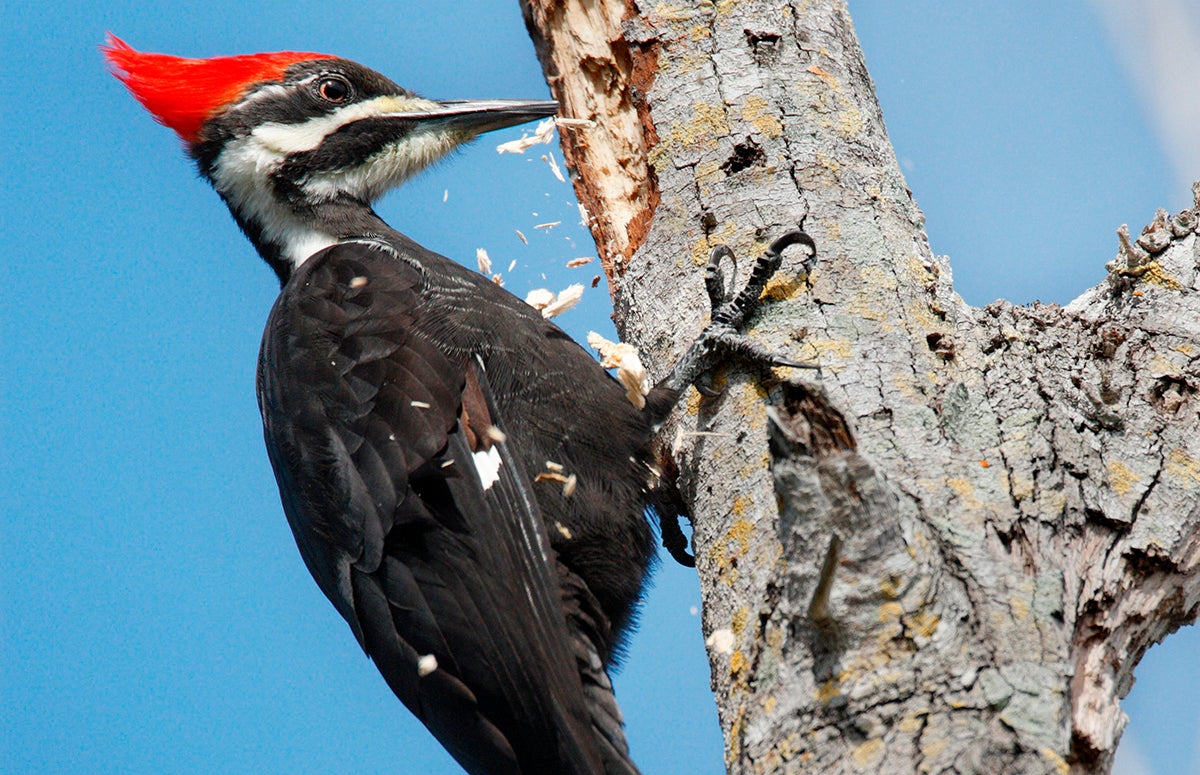Experiencing Woodpeckers in Florida: Variety Variety and Identification
Wiki Article
Unveiling the Secrets of Woodpeckers: Behavior, Habitat, and Extra
Woodpeckers, with their unique habits and specialized adaptations, have actually lengthy captivated scientists and nature enthusiasts alike. By uncovering the enigmas bordering woodpeckers' actions and environment options, a deeper understanding of these avian wonders emerges, providing a peek into their fascinating world.Woodpecker Actions Insights
In taking a look at woodpecker habits, a fascinating display of specialized abilities and adjustments emerges, losing light on their exceptional ecological niche. Woodpeckers, understood for their distinctive drumming on trees, possess a variety of behavior characteristics that contribute to their survival and success in their atmosphere.Furthermore, woodpeckers show a distinct feeding habits characterized by their ability to essence pests from tree bark using their specialized beaks. Their long, barbed tongues help in capturing victim, while their solid neck muscles supply security and precision during pecking movements. This feeding approach allows woodpeckers to gain access to concealed insect larvae and remove them with amazing performance.
Environment Preferences and Selection
What aspects affect the environment preferences and selection of woodpeckers? Woodpeckers are extremely versatile birds understood to populate different atmospheres worldwide. Nevertheless, they do display preferences for sure habitat characteristics. One essential element influencing woodpecker habitat option is the schedule of suitable nesting sites. Woodpeckers normally favor forests with a mix of mature trees that supply ample opportunities for tooth cavity excavation. These tooth cavities work as crucial nesting and roosting websites for woodpeckers and are essential for their breeding success.In addition, woodpeckers reveal a choice for habitats with a plentiful supply of food sources. They are mostly insectivorous, eating beetles, ants, larvae, and various other pests located in worn out timber or tree bark. Woodpeckers tend to prefer wooded areas with a diverse insect populace to satisfy their dietary requirements.
Additionally, the visibility of dead or decaying trees is another key consider woodpecker environment choice. These trees not just supply food sources but additionally provide suitable substratum for tooth cavity excavation. Dead trees are essential for the upkeep of healthy woodpecker populaces, as they play an essential function in the woodpeckers' life process and environment dynamics.
Feeding Behaviors and Diet Plan Make-up
Woodpeckers show a specialized feeding behavior concentrated on foraging for bugs within various habitats. Their diet regimen mostly contains insects such as beetles, ants, caterpillars, and spiders, which they locate by tapping on tree bark and listening for the audio of motion inside. Woodpeckers use their strong beaks to pierce into the timber and their long, barbed tongues to draw out prey from gaps. Along with bugs, woodpeckers also take in tree sap, fruits, nuts, and seeds, including range to their diet depending upon the season and schedule of food sources.The foraging strategies of woodpeckers are well-adapted to their arboreal way of living (Woodpeckers in Florida). Their ability to dig deep into wood not only supplies them with food but also assists in producing nesting tooth cavities and developing regions. Woodpeckers play a crucial role in maintaining the health and wellness of forests by controlling insect populaces and assisting in the disintegration of timber. Comprehending their feeding practices and diet composition is essential for preservation sites initiatives focused on protecting these unique and valuable birds.
Drumming Sounds and Interaction
Utilizing fast drumming sounds on various surfaces, woodpeckers utilize a distinct form of communication to indicate region boundaries and draw in friends. This drumming behavior is not only a way of interaction but also functions as a means for woodpeckers to establish their visibility within a specific area. The strength, speed, and pattern of the drumming can communicate important details to other woodpeckers around.Woodpeckers utilize drumming sounds to reveal their presence in an area and to warn off prospective intruders. The loud and recurring nature of the drumming acts as a clear signal to various other woodpeckers that the area is currently claimed. This aids in minimizing conflicts and decreasing physical conflicts in between individuals.

Survival Adaptations and Specialized Anatomy

Verdict
Finally, woodpeckers display distinct habits, such as drumming sounds for interaction, and have actually specialized composition for survival in their selected habitats. Their feeding practices and diet composition further show their versatility to different environments. By recognizing these facets of woodpeckers, researchers and guardians can go right here better protect and preserve these remarkable birds and their communities.Report this wiki page